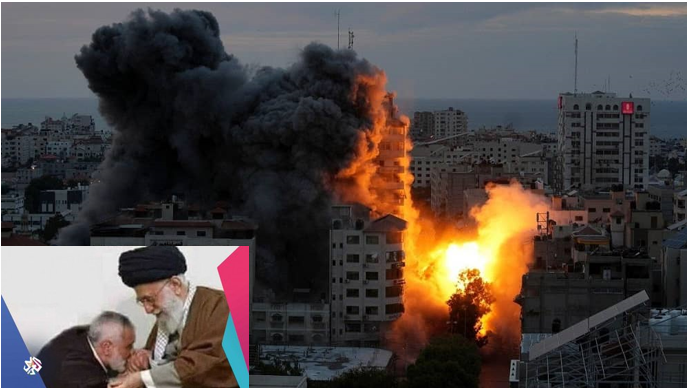
On October 10, Leader of Iran, Ali Khamenei, vehemently denied any involvement in the latest upheavals in the Middle East.
The Iranian leader’s statement comes as uprisings from the previous year still smolder throughout Iran. Yet, despite his denial, many hold reservations, given the Iranian regime’s history of fostering regional conflicts since its inception.
Historically, the regime, under the leadership of its founder, Ruhollah Khomeini, showcased an aggressive stance towards territorial expansion. Analysts often compare Khamenei’s strategy to that of an octopus; its body anchored in Tehran while its arms stretch to various Middle Eastern nations. These actions reflect the regime’s medieval nature, which drastically contrasts the democratic and progressive aspirations of the Iranian populace.
The 1979 revolution, initially aimed at overthrowing the monarchy, was quickly co-opted by Khomeini. Recognizing the enormous potential of Iran’s youthful population, Khomeini faced the dilemma of how to harness this power. Rather than ushering the nation into a new era of cultural, social, and economic growth, Khomeini perceived the progressive forces, especially groups like the People’s Mojahedin of Iran (PMOI/MEK), as threats to his power. In response, he leveraged the energy of the youth for territorial ambitions, notably against Iraq.

Analysts often compare Khamenei’s strategy to that of an octopus; its body anchored in Tehran while its arms stretch to various Middle Eastern nations.
Khomeini’s provocation of Iraq laid the foundation for a devastating conflict. Describing the war as a “divine gift”, he was prepared to let it rage on for decades. It’s debated how long this war would have persisted had the National Liberation Army (NLA) not intervened, compelling Khomeini to agree to a ceasefire.
An enlightening perspective on Khomeini’s pro-war sentiments was shared by Mohammad Javad Mozafar, the Director General of Foreign Media during the conflict. On September 29, he revealed Khomeini’s attempts to incite an uprising against Saddam Hussein in April 1980, months before the war’s onset. He criticized the regime’s naive belief that the Iraqi populace would topple Saddam upon their provocation.
Far from being merely a miscalculation, Khomeini’s warmongering was a calculated power move. The war provided a means to suppress internal dissent, most notably from PMOI members, under the guise of national security.
Khomeini’s ambitions weren’t confined to Iraq. Evidence suggests intentions of wider regional influence. A notable revelation came from Issa Tabatabai, Khamenei’s representative in Lebanon, who, in a September 14 interview, claimed that Khomeini personally ordered the bombing of the American Marines headquarters in Beirut in 1983.
Warmongering persisted under Khomeini’s successors, with acts like the Khobar Towers explosion in Saudi Arabia and the AMIA bombing in Argentina linked to the Iranian regime. Khamenei, adopting the term “strategic depth,” has openly stated that fighting in nations like Iraq, Syria, and Lebanon prevents internal confrontations within Iranian cities.

As the region grapples with the latest conflicts, the world watches closely, aware of Iran’s history and wary of its future ambitions.

MEK Iran (follow us on Twitter and Facebook), Maryam Rajavi’s on her site, Twitter & Facebook, NCRI (Twitter & Facebook), and People’s Mojahedin Organization of Iran – MEK IRAN – YouTu
